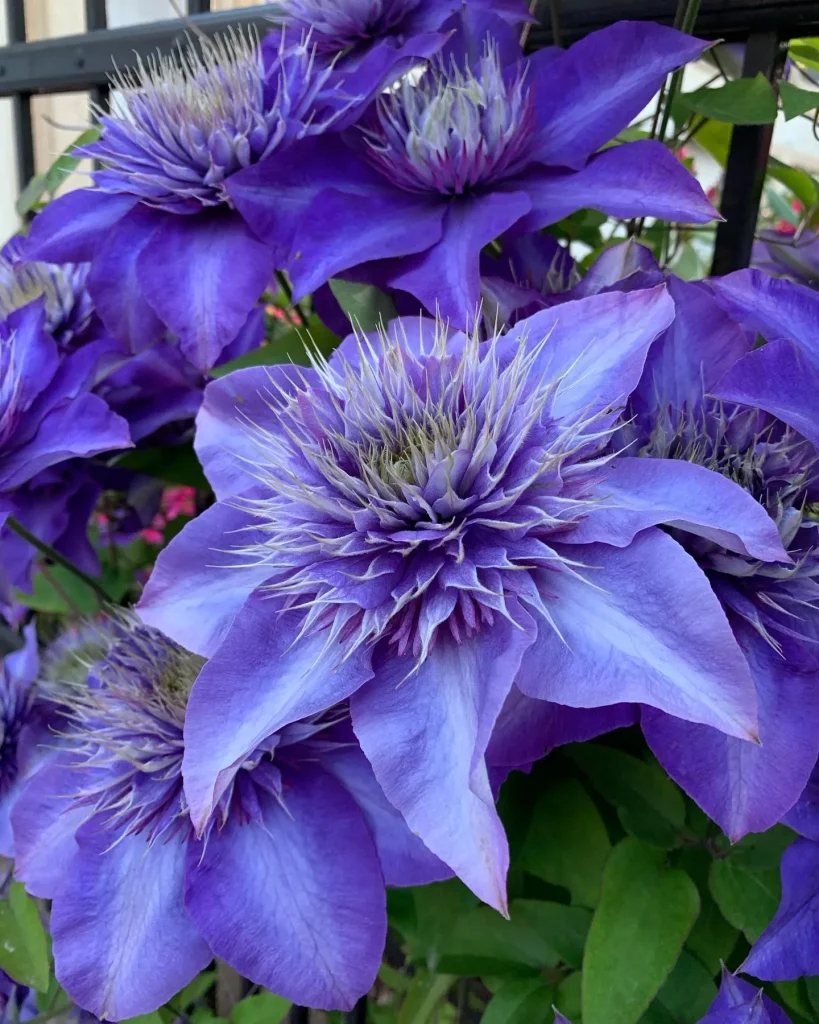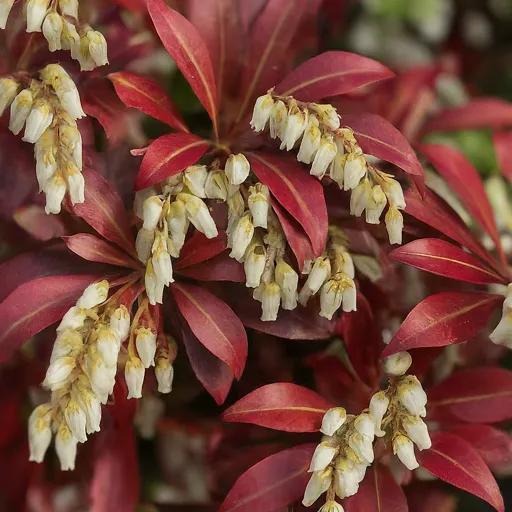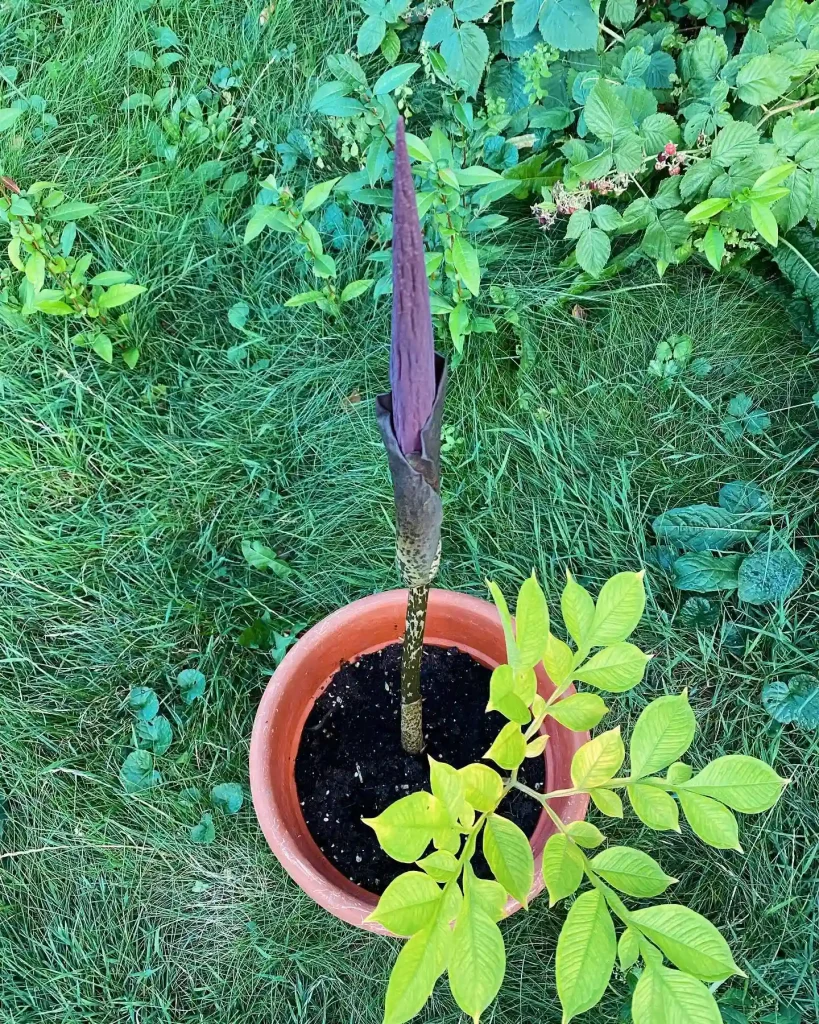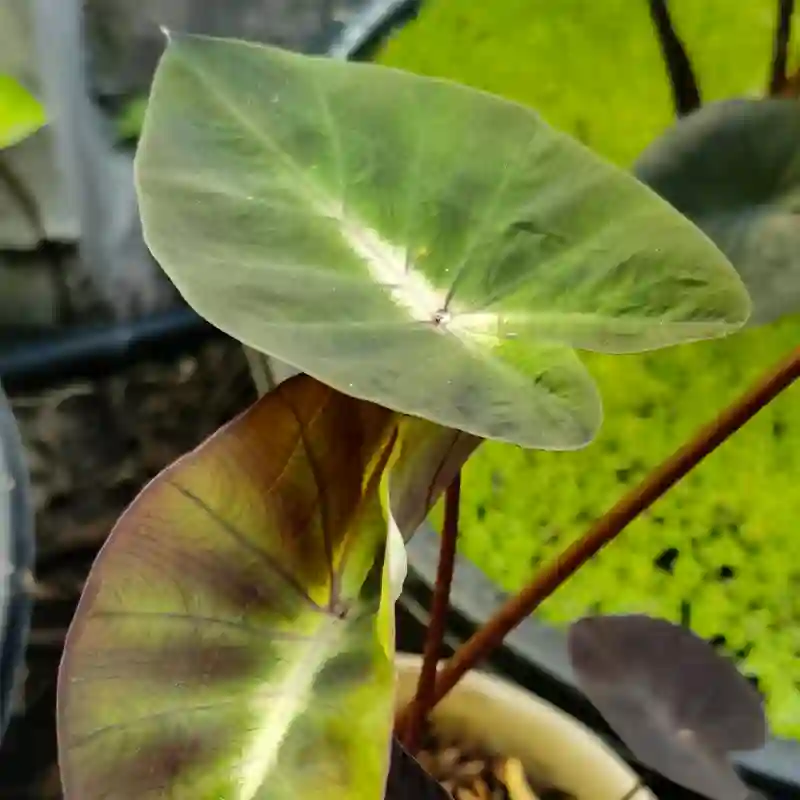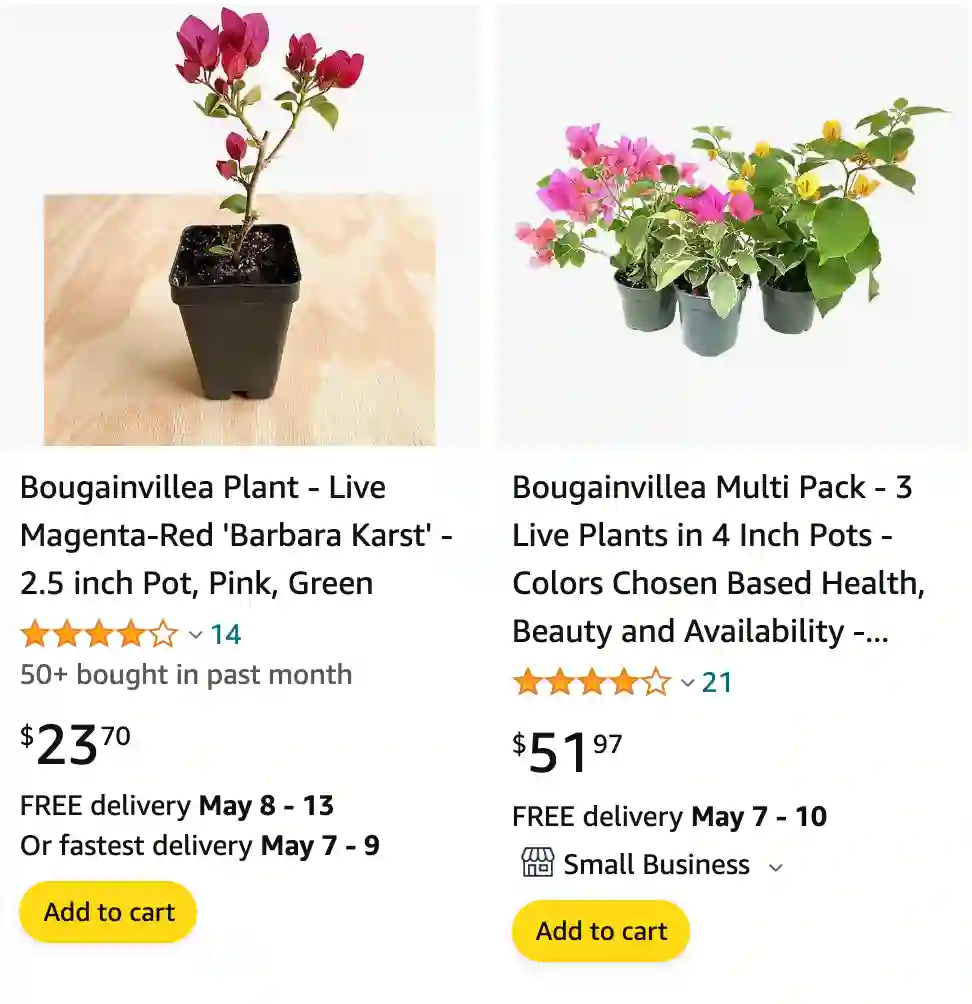
Bougainvillea: A Riot of Color in My Garden
As an avid gardener, I’m always on the lookout for plants that bring vibrancy and life to my space. And few plants do this quite like the Bougainvillea. With its explosion of color and hardy nature, it’s a firm favorite in my garden, and I’m always eager to share my appreciation for this stunning genus.
A South American Beauty
Originally hailing from South America, Bougainvillea is a genus of ornamental vines, bushes, and trees. It belongs to the Nyctaginaceae family, more commonly known as the four o’clock family. What we perceive as the flower are actually bracts – modified leaves that surround the true, tiny flower. These bracts come in a dazzling array of colors – from the vibrant magenta and fiery orange that first caught my eye, to softer pinks, whites, and even yellows.
More Than Just a Pretty Face
Bougainvillea is a surprisingly versatile plant. Its vigorous growth habit makes it a popular choice for covering walls, fences, and pergolas. I’ve even seen it trained into a standard, creating a dramatic focal point in the garden. But it’s not just about aesthetics; Bougainvillea also attracts pollinators like bees and butterflies, adding another layer of life to my outdoor space.
A Diverse Genus
While many people are familiar with the common varieties, the Bougainvillea genus actually boasts a diverse range of species. Here are:
- Bougainvillea berberidifolia Heimerl
- Bougainvillea campanulata Heimerl
- Bougainvillea fasciculata Brandão
- Bougainvillea glabra Choisy Plant FAQs: Bougainvillea Glabra
- Bougainvillea herzogiana Heimerl
- Bougainvillea infesta Griseb.
- Bougainvillea lehmanniana Heimerl
- Bougainvillea malmeana Heimerl
- Bougainvillea modesta Heimerl
- Bougainvillea pachyphylla Heimerl ex Standl.
- Bougainvillea peruviana Bonpl.
- Bougainvillea pomacea Choisy
- Bougainvillea praecox Griseb.
- Bougainvillea spectabilis Willd.
- Bougainvillea spinosa (Cav.) Heimerl
- Bougainvillea stipitata Griseb.
- Bougainvillea trollii Heimerl
Is bougainvillea poisonous to dogs?
While I haven’t personally witnessed my dog, Charlie, getting sick from the bougainvillea, I do know it can irritate his tummy. There were a couple of times I caught him sniffing around the base of the plant, and later that day, he seemed a bit off. He threw up some foamy white stuff and wasn’t too interested in his dinner. It wasn’t a serious thing, but it definitely convinced me to keep a closer eye on him around those bright flowers. Since then, I’ve been trimming the bougainvillea back more regularly to make it less tempting for him to chew on.
Does bougainvillea have thorns?
Absolutely! Those beautiful bougainvillea vines are deceiving. They might look all sunshine and rainbows with their vibrant flowers, but get too close and you’ll feel those nasty thorns. I learned that the hard way when I was trying to take a closer look at a particularly stunning bloom. One minute I’m admiring the flower, the next I’m yanking my hand back with a thorn stuck in my finger. Let me tell you, those things are sharp! They might not be huge, but they pack a punch. Now I always wear gloves when I’m pruning the bougainvillea, and I definitely wouldn’t recommend letting kids or pets play too close without supervision.
How often to water bougainvillea?
Watering my bougainvillea is all about finding the happy medium between underwatered and overwatered. It took some trial and error, let me tell you! On those super hot days, if I forget to water, the poor thing starts looking a little droopy, with the leaves curling at the edges. That’s my signal to grab the hose and give it a good, deep soak. But I’ve also learned that overwatering is just as bad. One time I got a little overzealous and the next thing I knew, the leaves were turning yellow and falling off. Not good! Now, I wait until the top inch or two of soil feels dry before giving it a drink. It seems to be much happier that way, rewarding me with those beautiful blooms all season long.
Do deer eat bougainvillea?
I wouldn’t say deer exactly flock to my bougainvillea for a gourmet meal. Those thorny vines seem to do a pretty good job of keeping them at bay. There have been a few mornings where I’ve spotted some nibbled leaves near the edges, but nothing major. Maybe a particularly brave (or hungry) deer gave it a shot, but clearly those thorns weren’t worth the trouble. My neighbor, however, who has some fancy roses that deer love to munch on, swears by bougainvillea as a deer-resistant plant. So, while I can’t guarantee they’ll never touch it, in my experience, the bougainvillea puts up a pretty good fight against those pesky deer.
How often to water bougainvillea in pots?
Watering my bougainvillea in the pot can be a bit trickier than the one planted in the ground. Since the pot dries out faster, I have to be more careful not to neglect it, but overwatering is still a risk. During the hot summer months, I usually water it once a week, or maybe even twice if we’ve had a scorching heatwave. The key for me is checking the soil. I stick my finger in a couple of inches deep – if it feels dry, it’s watering time! But if the soil still feels moist, I hold off for another day or two. It’s all about that balance – giving the plant enough water to drink without drowning its roots. One thing I’ve learned is that bougainvillea seems happier on the drier side, so I err on the side of caution and wait until the soil feels dry before giving it a good soak. It seems to reward me with those beautiful blooms all season long!
Where to buy bougainvillea near me?
I can’t directly search for stores near you, but I can help you find some places to look! Here are a few options:
- Local nurseries and garden centers: These are a great place to find bougainvillea, especially if you want some expert advice on choosing the right variety and caring for it. You can usually search for them online by typing in “nurseries near me” or “garden centers near [your zip code]”.
- Big box home improvement stores: Stores like Lowe’s and Home Depot often carry a selection of bougainvillea, particularly during the spring and summer months. You can check their websites or apps to see if they have any in stock at your local store.
- Online retailers: While I can’t provide specific links, some online retailers sell bougainvillea plants that can be shipped to your home. Just be sure to factor in shipping costs and consider the plant’s delicate nature before ordering online.
How to grow bougainvillea on a wall?
To grow bougainvillea on a wall, I first made sure to choose a sunny spot because these plants thrive in full sun. Then, I prepared the wall by installing a sturdy trellis or support structure to give the bougainvillea something to climb on. I dug a hole and planted the bougainvillea near the base of the wall, making sure to give it enough space to spread out. Regular watering is crucial, especially during the first few months to help establish roots. I also fertilized the plant regularly to promote healthy growth and vibrant blooms. Pruning is essential to keep the plant in check and encourage more flowering. With patience and care, my bougainvillea now cascades beautifully along the wall, adding a burst of color to my outdoor space.
How to get a bougainvillea to bloom?
Getting a bougainvillea to bloom requires a bit of patience and attention to its needs. I’ve found that providing ample sunlight is key, so I make sure to place my bougainvillea in a spot that gets at least six hours of direct sunlight daily. Proper watering is also important; I water my plant deeply but infrequently, allowing the soil to dry out slightly between waterings. I’ve noticed that stressing the plant a bit by letting it dry out slightly can sometimes encourage blooming. Additionally, regular fertilization during the growing season with a balanced fertilizer high in potassium helps promote flower production. Pruning is essential too; I trim back the plant after each bloom cycle to encourage new growth and more flowers. With consistent care and attention to these factors, my bougainvillea rewards me with a stunning display of colorful blooms throughout the growing season.
Can bougainvillea grow in shade?
While bougainvillea thrives in full sunlight, it can tolerate some shade, but its blooming might be affected. I’ve experimented with placing bougainvillea in partially shaded areas of my garden, and while they survived, they didn’t bloom as profusely as those in sunnier spots. If you’re considering growing bougainvillea in shade, make sure it still receives at least a few hours of direct sunlight each day to encourage blooming. Keep in mind that the more sunlight it gets, the more likely it is to bloom abundantly and produce vibrant colors. If you must grow bougainvillea in shade, choose varieties that are known to be more tolerant of lower light conditions.
Is bougainvillea poisonous to cats?
Yes, bougainvillea can be toxic to cats if ingested. The sap of the bougainvillea plant contains substances that can cause gastrointestinal upset, such as vomiting and diarrhea, if consumed by cats. Additionally, the thorns on the plant can cause physical injury if a cat comes into contact with them. As a cat owner myself, I take precautions to keep my bougainvillea out of reach of my pets to ensure their safety. If you suspect that your cat has ingested any part of a bougainvillea plant or is showing signs of illness after being exposed to one, it’s important to contact your veterinarian for advice and assistance.
What is eating my bougainvillea?
Discovering what’s eating your bougainvillea can be a bit of detective work. I’ve had my fair share of experiences with pests munching on my plants. One common culprit might be caterpillars, especially those of the bougainvillea caterpillar moth. These little critters can quickly devour leaves and flowers if left unchecked. I’ve also encountered aphids and whiteflies, which tend to congregate on the undersides of leaves, sucking the sap and causing damage. Another possibility could be snails or slugs, especially if you notice irregular holes in the leaves. To identify the pest accurately, I recommend inspecting your bougainvillea carefully, both during the day and at night, as some pests are more active during specific times. Once you’ve identified the culprit, you can take appropriate measures to control them, whether it’s through manual removal, natural predators, or targeted pesticides.
Why is my bougainvillea dying?
When my bougainvillea started showing signs of distress, it was quite concerning. Several factors could contribute to a bougainvillea’s decline. One possibility is overwatering; these plants prefer well-draining soil, so if the roots are sitting in waterlogged soil, they can rot, leading to wilting and eventual death. On the other hand, underwatering can also be a problem, causing the plant to become stressed and wilt. Additionally, insufficient sunlight can weaken the plant and inhibit its growth. Pests and diseases can also take a toll on bougainvilleas; for example, root rot caused by fungal pathogens can lead to wilting and yellowing of leaves. Lastly, environmental factors like extreme temperatures or sudden changes in conditions can stress the plant. When my bougainvillea was struggling, I carefully assessed its growing conditions and made adjustments accordingly, such as adjusting watering frequency, improving drainage, or providing more sunlight. If the issue persists, consulting a local gardening expert or extension service can provide valuable insight and assistance in saving the plant.
Do bougainvillea attract bees?
Yes, bougainvillea flowers do attract bees, as well as other pollinators like butterflies and hummingbirds. The brightly colored bracts of the bougainvillea, which are often mistaken for flowers, serve as landing platforms for these pollinators. While the true flowers of the bougainvillea are small and inconspicuous, they produce nectar that attracts bees in search of food. As a gardener who enjoys seeing a variety of pollinators in my garden, I appreciate the role that bougainvilleas play in supporting these beneficial insects. However, if you or someone in your household is allergic to bee stings, it’s essential to take precautions and be mindful of bee activity when working around bougainvillea plants.
Do bougainvillea like coffee grounds?
Using coffee grounds as a fertilizer for bougainvillea can be beneficial due to their nutrient content and acidity. I’ve tried incorporating coffee grounds into the soil around my bougainvillea plants, and I’ve noticed that it can help improve soil structure and provide a slow-release source of nitrogen, potassium, and other essential nutrients. Additionally, the acidity of coffee grounds can mimic the slightly acidic soil conditions that bougainvillea prefer. However, it’s essential not to overdo it, as excessive coffee grounds can increase the acidity of the soil too much, which may not be ideal for the plant. I recommend mixing coffee grounds with other organic matter, such as compost or mulch, and applying them sparingly around the base of the plant. This way, you can provide a nutrient boost to your bougainvillea without risking over-fertilization or soil acidity issues.
Do hummingbirds like bougainvillea?
Yes, hummingbirds are attracted to bougainvillea flowers. While bougainvillea flowers are typically small and inconspicuous, the brightly colored bracts that surround them serve as visual attractants for pollinators, including hummingbirds. These vibrant bracts, which come in shades of pink, red, purple, orange, and white, are rich in nectar, making them a valuable food source for hummingbirds. As a result, bougainvillea plants often attract these tiny, energetic birds, adding an extra layer of beauty and activity to the garden. I’ve enjoyed watching hummingbirds flit from flower to flower, sipping nectar from my bougainvillea blooms, and adding a delightful touch of liveliness to my outdoor space.
Does bougainvillea damage walls?
While bougainvillea can climb and attach itself to walls using its aerial roots or thorns, it typically does not cause significant damage to sturdy walls made of materials like concrete, brick, or stone. However, if the wall surface is already weakened or has existing cracks, the growth of bougainvillea vines may exacerbate these issues over time. Additionally, the accumulation of debris such as dead leaves and flowers in the crevices of the wall can promote moisture retention, which may lead to deterioration or discoloration of the wall surface. Regular maintenance, such as pruning the bougainvillea to prevent excessive growth and cleaning the wall to remove debris, can help mitigate any potential damage and keep both the plant and the wall in good condition.
Is bougainvillea edible?
No, bougainvillea is not considered edible. While the plant is prized for its colorful bracts and ornamental value, its leaves, flowers, and stems are not typically consumed as food. In fact, bougainvillea contains compounds that can be toxic if ingested, especially in large quantities. These compounds can cause gastrointestinal discomfort and other adverse effects if consumed. Therefore, it’s important to avoid eating any part of the bougainvillea plant and to keep it out of reach of children and pets to prevent accidental ingestion.
Why isn’t my bougainvillea blooming?
When a bougainvillea isn’t blooming, several factors could be at play. Firstly, insufficient sunlight might be the issue. Bougainvilleas thrive in full sunlight, so if they’re not getting at least six hours of direct sunlight per day, blooming may be inhibited. Additionally, overfertilization with high-nitrogen fertilizers can promote foliage growth at the expense of blooms. Pruning at the wrong time or too aggressively can also remove flower buds before they have a chance to develop. Another possibility is stress caused by factors like drought, waterlogging, or extreme temperatures, which can disrupt the plant’s blooming cycle. Lastly, age and variety can play a role; some bougainvillea varieties are naturally more prolific bloomers than others, and younger plants may take some time to reach blooming maturity. By addressing these factors and providing optimal growing conditions, such as ample sunlight, appropriate pruning, and balanced fertilization, you can encourage your bougainvillea to bloom more abundantly.
Can bougainvillea grow in zone 7?
Bougainvillea is typically suited for USDA hardiness zones 9 and above, as it prefers warm temperatures and cannot tolerate freezing conditions. However, with proper care and protection during cold weather, it may be possible to grow bougainvillea in zone 7. To increase the chances of success, consider planting bougainvillea in a sheltered location, such as against a south-facing wall or in a protected courtyard, where it can benefit from radiant heat and be shielded from harsh winds. During the winter months, provide additional insulation by mulching around the base of the plant and covering it with frost cloth or a temporary structure to protect it from freezing temperatures. Keep in mind that growing bougainvillea in zone 7 may require extra effort and vigilance to ensure the plant’s survival during cold snaps.
Can bougainvillea survive winter?
Bougainvillea is sensitive to cold temperatures and cannot withstand freezing conditions. While it is a hardy plant that can tolerate a range of environmental conditions, including drought and heat, prolonged exposure to temperatures near or below freezing can damage or even kill bougainvillea. In regions where winter temperatures regularly drop below freezing, bougainvillea is typically grown as an annual or container plant that is brought indoors during the colder months to protect it from frost and freezing temperatures. If you live in an area with mild winters, bougainvillea may survive outdoors with some protection, such as mulching around the base of the plant and covering it with frost cloth or a temporary structure during cold snaps. However, in regions where freezing temperatures are common, it’s best to treat bougainvillea as a tender plant and provide appropriate protection to ensure its survival through the winter.
Do bougainvillea like acidic soil?
Bougainvillea prefers slightly acidic to neutral soil with a pH range of around 5.5 to 6.5. While it can tolerate a range of soil pH levels, including slightly alkaline soils, slightly acidic conditions are generally more favorable for optimal growth and blooming. Acidic soil helps bougainvillea absorb nutrients more efficiently, which can promote healthier growth and more vibrant blooms. If your soil is too alkaline, amending it with organic matter such as compost, peat moss, or acidic fertilizers can help lower the pH and create a more suitable growing environment for bougainvillea. Regular soil testing can also help monitor pH levels and adjust soil amendments accordingly to ensure your bougainvillea thrives.
How cold can bougainvillea tolerate?
Bougainvillea is sensitive to cold temperatures and cannot tolerate freezing conditions. While mature bougainvillea plants can withstand brief periods of near-freezing temperatures (around 32°F or 0°C) without significant damage, prolonged exposure to cold temperatures below freezing can harm or even kill the plant. Younger or more tender bougainvillea plants are even more susceptible to cold damage. In regions where winter temperatures regularly drop below freezing, bougainvillea is often grown as an annual or container plant that is brought indoors during the colder months to protect it from frost and freezing temperatures. Providing adequate protection, such as mulching, covering with frost cloth, or bringing indoors during freezing weather, can help safeguard bougainvillea from cold damage and ensure its survival through the winter.
A Constant Source of Inspiration
Whether it’s the vibrant colors, the vigorous growth, or the sheer resilience of this plant, Bougainvillea continues to fascinate and inspire me. It’s a constant reminder of the beauty and diversity of the natural world, and I’m grateful for the joy it brings to my garden.
If i die, water my plants!
